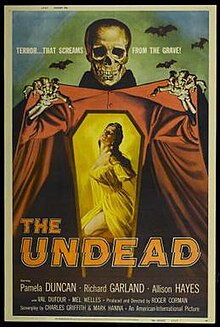
Roger William Corman is an American film director, producer, and actor. Known under various monikers such as "The Pope of Pop Cinema", "The Spiritual Godfather of the New Hollywood", and "The King of Cult", he is known as a trailblazer in the world of independent film. Many of Corman's films are low-budget cult films including some which are adapted from the tales of Edgar Allan Poe.
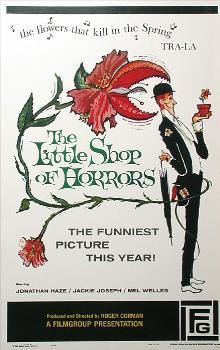
The Little Shop of Horrors is a 1960 American horror comedy film directed by Roger Corman. Written by Charles B. Griffith, the film is a farce about a florist's assistant who cultivates a plant that feeds on human blood. The film's concept may have been inspired by "Green Thoughts", a 1932 story by John Collier about a man-eating plant. Hollywood writer Dennis McDougal suggests that Griffith may have been influenced by Arthur C. Clarke's 1956 science fiction short story "The Reluctant Orchid".

It Conquered the World is an independently made 1956 American black-and-white science fiction film, produced and directed by Roger Corman, starring Peter Graves, Lee Van Cleef, Beverly Garland, and Sally Fraser. It Conquered the World was released theatrically by American International Pictures as a double feature with The She-Creature.

The Wild Angels is a 1966 American independent outlaw biker film produced and directed by Roger Corman. Made on location in Southern California, The Wild Angels was the first film to associate actor Peter Fonda with Harley-Davidson motorcycles and 1960s counterculture. It inspired the biker film genre that continued into the early 1970s.
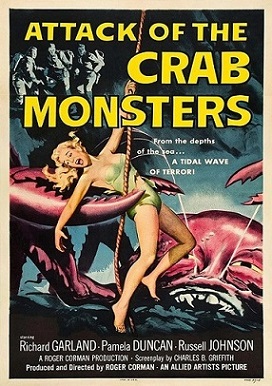
Attack of the Crab Monsters is a 1957 independently made American black-and-white science fiction-horror film, produced and directed by Roger Corman, that stars Richard Garland, Pamela Duncan, and Russell Johnson. The film was distributed by Allied Artists as a double feature showing with Corman's Not of This Earth.
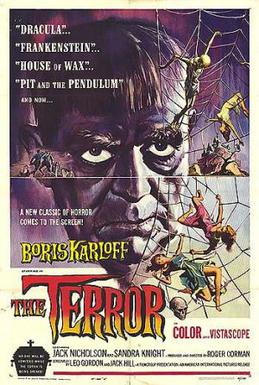
The Terror is a 1963 American independent horror film produced and directed by Roger Corman. The film stars Boris Karloff and Jack Nicholson, the latter of whom portrays a French officer who is seduced by a woman who is also a shapeshifting devil.
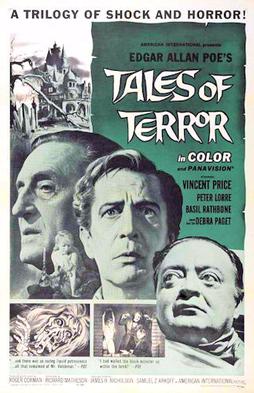
Tales of Terror is a 1962 American International Pictures comedy horror film in colour and Panavision, produced by Samuel Z. Arkoff, James H. Nicholson, and Roger Corman, who also directed. The screenplay was written by Richard Matheson, and the film stars Vincent Price, Peter Lorre, and Basil Rathbone. It is the fourth in the so-called Corman-Poe cycle of eight films, largely featuring adaptations of Edgar Allan Poe stories and directed by Corman for AIP. The film was released in 1962 as a double feature with Panic in Year Zero!.
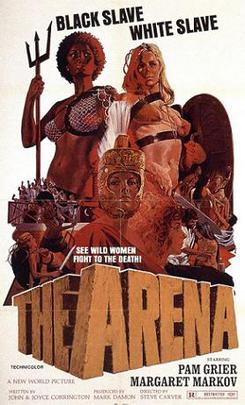
The Arena, also known as Naked Warriors, is a 1974 gladiator exploitation film directed by Steve Carver and starring Margaret Markov and Pam Grier. Joe D'Amato, the film's cinematographer, has stated that he took over direction of the fight scenes in the film.

Creature from the Haunted Sea is a 1961 horror comedy movie directed by Roger Corman. Written by Charles B. Griffith, the movie is a parody of spy, gangster, and monster movies, concerning a secret agent, XK150, who uses the name "Sparks Moran" in order to infiltrate a criminal gang commanded by Renzo Capetto, who is trying to transport an exiled Cuban general with an entourage and a large portion of the Cuban treasury out of Cuba. Filmgroup released the movie as a double feature with Devil's Partner.

Charles Byron Griffith was an American screenwriter, actor, and film director. He was the son of Donna Dameral, radio star of Myrt and Marge, along with Charles' grandmother, Myrtle Vail, and was best known for writing Roger Corman productions such as A Bucket of Blood (1959), The Little Shop of Horrors (1960), and Death Race 2000 (1975).

Day the World Ended is a 1955 independently made black-and-white post-apocalyptic science fiction film, produced and directed by Roger Corman, that stars Richard Denning, Lori Nelson, Adele Jergens, Paul Birch (actor) and Mike Connors. Chet Huntley of NBC, later of The Huntley-Brinkley Report, served as the film's narrator. It was released by American Releasing Corporation as a double feature with The Phantom from 10,000 Leagues.

Gunslinger is a 1956 American Western film directed by Roger Corman and starring John Ireland, Beverly Garland and Allison Hayes. The screenplay was written by Mark Hanna and Charles B. Griffith.
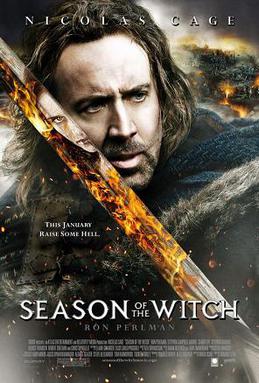
Season of the Witch is a 2011 American supernatural action-adventure film starring Nicolas Cage and Ron Perlman, and directed by Dominic Sena. Cage and Perlman star as Teutonic Knights who return from the Crusades to find their homeland devastated by the Black Death. Two church elders accuse a young woman of being a witch responsible for the plague. They command the two knights to transport her to a distant monastery so the monks can lift her curse. The film reunited Sena and Cage, who had previously worked together on Gone in 60 Seconds.

Rock All Night is a 1957 crime drama film produced and directed by Roger Corman. Distributed by American International Pictures, it is based on a 25-minute television episode of The Jane Wyman Show from 1955 called "The Little Guy." It stars Dick Miller, Russell Johnson and Abby Dalton. It co-stars Mel Welles, Ed Nelson and Clegg Hoyt. The film was released as a double feature with Dragstrip Girl.

Five Guns West is a 1955 Western film set during the American Civil War directed by Roger Corman. It was Corman's first film as director although he had already made two as producer. It was the second film released by the American Releasing Company, which later became American International Pictures.

Apache Woman is a 1955 American Western directed by Roger Corman and starring Lloyd Bridges. It was Corman's second film as director, following Five Guns West. It was one of four Westerns he made for American International Pictures, the other being Five Guns West, The Oklahoma Woman (1955) and Gunslinger (1956). Corman says Apache Woman and Oklahoma Woman were from ideas by AIP whereas the others were his ideas. This was the first film from Golden State Productions, a company headed by Alex Gordon.

Naked Paradise is a 1957 drama film directed by Roger Corman. It stars Richard Denning and Beverly Garland.
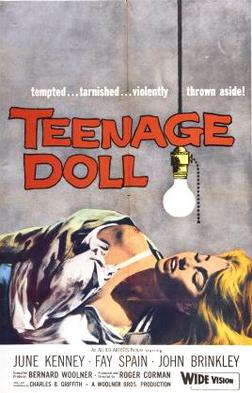
Teenage Doll is a 1957 film noir directed by Roger Corman, starring June Kenney and John Brinkley. It was financed by Lawrence Woolner, who had previously made Swamp Women with Corman. One writer called it Corman's "most impressive teen flick".

The Saga of the Viking Women and Their Voyage to the Waters of the Great Sea Serpent is a 1958 American action-adventure horror film directed by Roger Corman. It stars Abby Dalton, Susan Cabot and June Kenney.
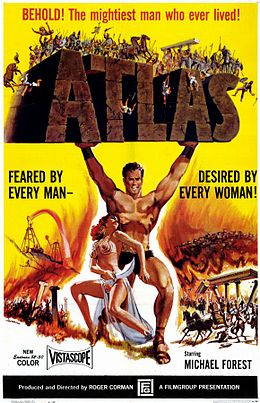
Atlas is a 1961 action-adventure peplum film directed by Roger Corman and starring Michael Forest and Frank Wolff. It was filmed in Greece. Corman called it "my last attempt to do a big picture on a low budget." Writer Charles B. Griffith said "Atlas was a mess. It was a doomed project. "
